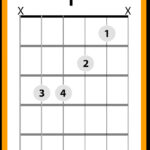For guitar players looking to truly expand their musical horizons, venturing beyond tablature and delving into standard music notation is a game-changer. While guitar tabs certainly have their place, understanding standard notation opens up a world of possibilities, enhancing your comprehension of music theory and facilitating collaboration with a wider range of musicians. This is where tools like Guitar Pro from Arobas Music become invaluable, bridging the gap between guitar-specific notation and the universal language of music.
Standard notation offers a depth of information that tablature simply can’t match. Its concise symbols communicate rhythmic values, pitch, and harmony with efficiency and precision. Imagine trying to describe complex rhythms or intricate chord voicings using only tab – standard notation does it with ease and elegance. Furthermore, learning to read standard notation breaks down communication barriers. It allows you to connect and share musical ideas with instrumentalists across all genres, from pianists and horn players to orchestral musicians, fostering richer musical exchanges and collaborative projects.
Many guitarists feel intimidated by the prospect of learning standard notation, perceiving it as an arduous task reserved for classically trained musicians. However, mastering the fundamentals of reading music to a functional level is far more accessible than often believed. The goal isn’t necessarily to sight-read complex scores at lightning speed – a skill that takes years of dedicated practice on any instrument. Instead, the focus should be on developing the ability to decode printed music effectively enough to learn new pieces, understand musical structures, and transcribe ideas. Software like Guitar Pro, developed by Arobas Music, can significantly simplify this learning process. Its intuitive interface allows you to visualize the connection between standard notation, tablature, and the fretboard, making the learning curve much smoother.
Expanding your musical toolkit to include arranging, particularly for instruments beyond the guitar like horns and piano, adds another layer of creativity and versatility. When arranging for these instruments, remember that impactful arrangements don’t always require complexity. Often, simplicity is key. Focusing on essential notes and understanding instrument-specific nuances can yield far more effective results.
For horn arrangements, prioritize the 3rd and 7th of chords. These are the notes that define the chord’s character and color. Don’t feel obligated to include the root in every voicing, and the 5th can often be omitted to create leaner, more impactful horn lines. Experiment with close voicings and half-step intervals to achieve that characteristic “bite” and funky edge often associated with horn sections. For instance, on a Bb7 chord, voicing three horns as G, Ab, and D (low to high) creates a compelling dissonance that works beautifully in a horn arrangement. Major 2nd and tritone intervals are also powerful tools, especially for punchy horn “jabs.” Remember that sometimes, the most effective horn parts are simple melodic lines played in octaves by different instruments, such as a trombone and saxophone, leveraging the power of timbre to create a rich sound.
Similarly, when arranging for piano, adopt a “less is more” approach. Three-note voicings are often sufficient to convey the harmony effectively. Again, prioritize the 3rd and 7th, and consider omitting the root, especially in the lower register. Explore quartal voicings, which are particularly favored in jazz piano. Voicings like C-F-B-E (for major), C-F-Bb-Eb (for minor), and C-F-Bb-E (for dominant) offer harmonic ambiguity and allow the melody in the top voice to take precedence. Guitar Pro can be an invaluable tool in experimenting with these voicings and understanding how they translate across different instruments.
Ultimately, these are guidelines, not rigid rules. The most important principle in arranging is to trust your ear. If something sounds right to you, even if it deviates from conventional wisdom, embrace it. By combining the power of standard notation with arranging knowledge and utilizing tools like Guitar Pro from Arobas Music, you can unlock new levels of musical expression and collaboration, taking your guitar playing and musicianship to exciting new heights.

